Compact Camera? How to Maximize Quality
Oct 25, 2011 18:27:28 #
By compact camera, I include simple point-and-shoots, and the more sophisticated superzooms. They all have in common a much smaller sensor than a DSLR. Even though many have a high pixel count, up to 10, 12 megapixels or more, the quality of the images needs something to be desired in terms of digital noise, lens distortions and resolution in comparison to a late model DSLR.
1. Shoot at your lower ISO settings (50 to 100). Noise (looks like film grain) and the more bothersome color-noise (specks of magenta and green, etc. in shadow areas) increases rapidly as you increase your ISO settings. If you use AUTO, the camera will decide on the ISO setting. (Some cameras allow you to set a range of ISO's the camera will select from.) If you use PROGRAM, you can set the ISO, and that will give you some control over the quality, if your P&S does not have Aperture priority, Shutter priority or Manual settings.
2. Use a tripod or some solid support for important shots. While this is counter-intuitive for those of you who love P&S's because of their pocketability, (and ability to simply point and shoot) it will improve the quality of your low light shots. Another advantage of a tripod is that, for many shots, you can avoid using the on-camera flash, with it's quick light fall-off and tell tale shadows.
3. Learn to edit your images using imaging software. You can use it to level the horizon , correct perspective, crop creatively, adjust exposure, white balance, color, contrast, saturation and sharpness, and with some programs (Photoshop CS2 and higher for example) correct lens distortions such as barrel and pincushion distortion caused by the zoom lenses.
4. Optimal exposure is important to avoid excessive noise caused by trying to correct over or underexposed images. To ensure the optimal exposures, use your camera's bracketing feature which will take three shots in rapid succession at three different exposures, as metered, from 1/3 to 1 stop above and below. If your camera supports RAW, by all means use it whenever you can, as RAW files provide much more graphic information than Jpeg files. They do require more time to process to Jpegs though. Well worth it in my opinion.
5. Accept (and work around) the creative limitations of a compact camera such as the difficulty in getting blurred backgrounds in portraits, and close-ups (compact cameras have relatively deep depth of field at most settings), the inferior autofocus systems (tracking flying birds at long zoom settings is virtually impossible), long night-time exposures (beyond 8 or 10 seconds) and other features that DSLRs have, such as low noise levels at high ISOs allowing hand held night photography. And finally:
6. Master your compact camera. Learn all that it can do. Read your Instruction manual. Learn all you can about photography. Who knows, after you learn a lot, you may need to have a DSLR to do what you want. OR, you may decide that the advantages of small size, minimal equipment and convernience of compact cameras are right for you either all the time, or as a backup to your DSLR.
And don't forget, you can take a ocean cruise with your compact camera for the price of one good DSLR lens.
1. Shoot at your lower ISO settings (50 to 100). Noise (looks like film grain) and the more bothersome color-noise (specks of magenta and green, etc. in shadow areas) increases rapidly as you increase your ISO settings. If you use AUTO, the camera will decide on the ISO setting. (Some cameras allow you to set a range of ISO's the camera will select from.) If you use PROGRAM, you can set the ISO, and that will give you some control over the quality, if your P&S does not have Aperture priority, Shutter priority or Manual settings.
2. Use a tripod or some solid support for important shots. While this is counter-intuitive for those of you who love P&S's because of their pocketability, (and ability to simply point and shoot) it will improve the quality of your low light shots. Another advantage of a tripod is that, for many shots, you can avoid using the on-camera flash, with it's quick light fall-off and tell tale shadows.
3. Learn to edit your images using imaging software. You can use it to level the horizon , correct perspective, crop creatively, adjust exposure, white balance, color, contrast, saturation and sharpness, and with some programs (Photoshop CS2 and higher for example) correct lens distortions such as barrel and pincushion distortion caused by the zoom lenses.
4. Optimal exposure is important to avoid excessive noise caused by trying to correct over or underexposed images. To ensure the optimal exposures, use your camera's bracketing feature which will take three shots in rapid succession at three different exposures, as metered, from 1/3 to 1 stop above and below. If your camera supports RAW, by all means use it whenever you can, as RAW files provide much more graphic information than Jpeg files. They do require more time to process to Jpegs though. Well worth it in my opinion.
5. Accept (and work around) the creative limitations of a compact camera such as the difficulty in getting blurred backgrounds in portraits, and close-ups (compact cameras have relatively deep depth of field at most settings), the inferior autofocus systems (tracking flying birds at long zoom settings is virtually impossible), long night-time exposures (beyond 8 or 10 seconds) and other features that DSLRs have, such as low noise levels at high ISOs allowing hand held night photography. And finally:
6. Master your compact camera. Learn all that it can do. Read your Instruction manual. Learn all you can about photography. Who knows, after you learn a lot, you may need to have a DSLR to do what you want. OR, you may decide that the advantages of small size, minimal equipment and convernience of compact cameras are right for you either all the time, or as a backup to your DSLR.
And don't forget, you can take a ocean cruise with your compact camera for the price of one good DSLR lens.
East Bay Hills shot with a Panasonic DMC TZ3
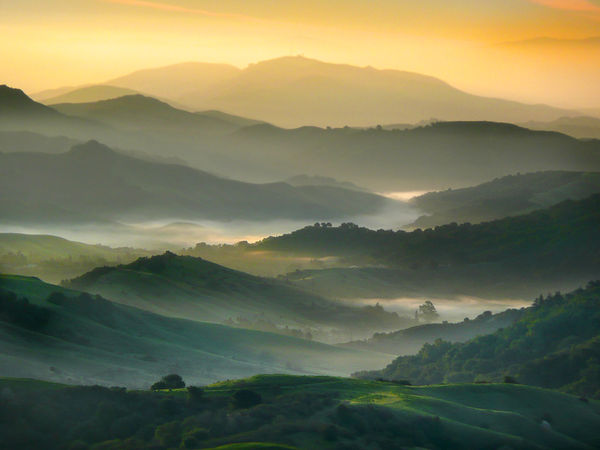
Oct 25, 2011 18:37:32 #
all good advice. The best positive advantage a point and shoot has is that you can put one in a pocket and always have a camera with you. untill i can afford a dslr again almost all my shots posted were taken with either a nikon l-22 p+s, a cannon powershot a530 P+s, or various nikon 35mm film cameras scanned into photoshop album. P+s digital still has more creative control then say shooting with an instamatic.
Oct 25, 2011 18:49:24 #
When I took up photography again after a two decade hiatus from film SLRs, I did not want to be hauling around a big camera and a bag full of lenses and filters again, so I started out with a 3 mp digital P&S, going through a series of them by Canon, Panasonic, Nikon and Samsung. Pretty soon I was hauling around a big sturdy tripod to improve my shots. Which is kind of counter productive.
Today I am hauling around a big DSLR and a bag with lenses, etc. My wife sticks with her Kodak superzooms, and take photos as good or better than mine (or so she thinks).
Today I am hauling around a big DSLR and a bag with lenses, etc. My wife sticks with her Kodak superzooms, and take photos as good or better than mine (or so she thinks).
Oct 25, 2011 18:55:39 #
architect wrote:
By compact camera, I include simple point-and-shoo... (show quote)
Beautiful photo. I commend you on your talent.
Oct 25, 2011 18:59:00 #
Thanks Bob. I forgot to mention that some compact cameras can take excellent macro shots, with lots of depth of field, so the whole insect or flower is sharp.
Oct 25, 2011 19:15:07 #
Here's an example of what a pocket camera, a Nikon S550, can do at very close range. Hint, that tiny mushroom is growing between the crack in a sidewalk.
-
-
Mushroom
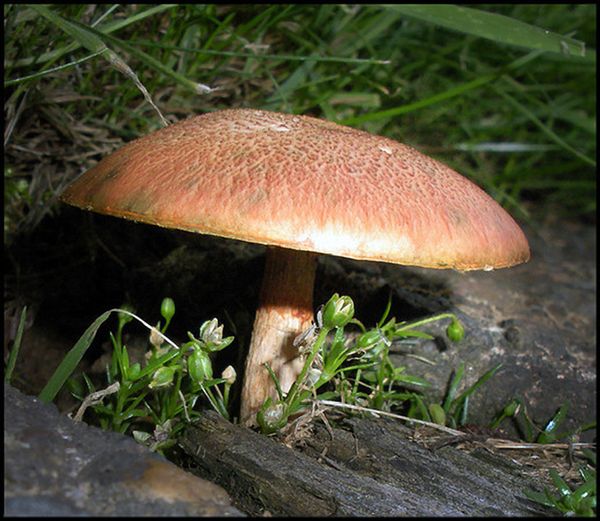
Oct 25, 2011 19:19:19 #
Good example of what a compact camera can do. Here is my example. Taken with a Canon S70 on a mini tripod.
Flat Crep Fungi
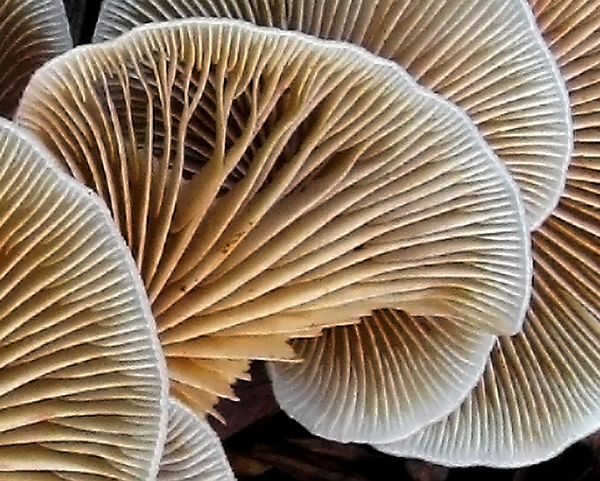
Oct 25, 2011 19:22:29 #
beautiful shot architect..just proves with certain subjects..such as landscapes..the PS is quite capable..as long as it's attach to a talent such as you..LOL
Oct 25, 2011 19:32:26 #
Thanks liv2paddle.
With any artistic discipline, knowing the strengths and weaknesses of your tools will allow you to make the best of their potential. And in my case, I recognized that I had gotten to the point where I could not do some of the things I wanted to do with a compact camera. I still have one as a backup though.
With any artistic discipline, knowing the strengths and weaknesses of your tools will allow you to make the best of their potential. And in my case, I recognized that I had gotten to the point where I could not do some of the things I wanted to do with a compact camera. I still have one as a backup though.
Oct 25, 2011 20:10:06 #
Here are a couple that I took recently w my point and shoot. I like to keep it with me whenever I go out. You just never know when something might catch your eye.
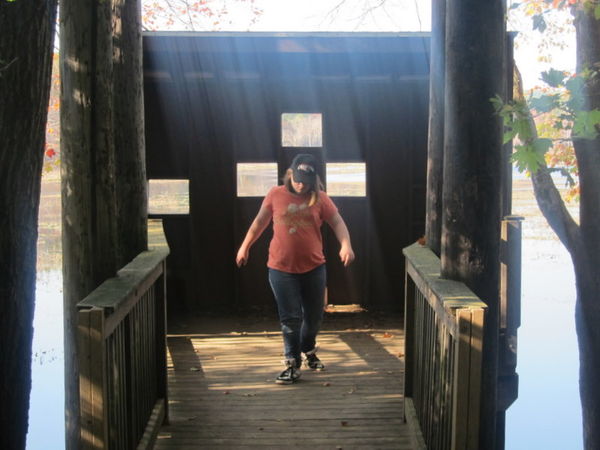
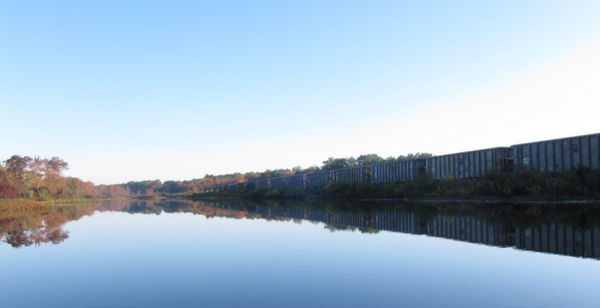
Oct 26, 2011 11:52:56 #
Wonderful commentary. I have a 50d and a Sony Cyber Shot with HD video. I carry the PandS always!!! I can just stick it out the window of the car and get crazy street shots on the fly. But I love my Canon 50D for all the reasons listed in your comments.
Oct 26, 2011 13:01:08 #
These were taken yesterday only because I had my Sony P and S
with me. We stopped at pool hall to have a bite to eat and saw these two wonderful characters and the other of the city is while my husband is driving. I shot this out the front window of the car!
with me. We stopped at pool hall to have a bite to eat and saw these two wonderful characters and the other of the city is while my husband is driving. I shot this out the front window of the car!

Oct 26, 2011 13:04:18 #
Ok, I need to try again for the pool hall shot. And needless to say...I did some post editing. This is the first time I've added photos here.
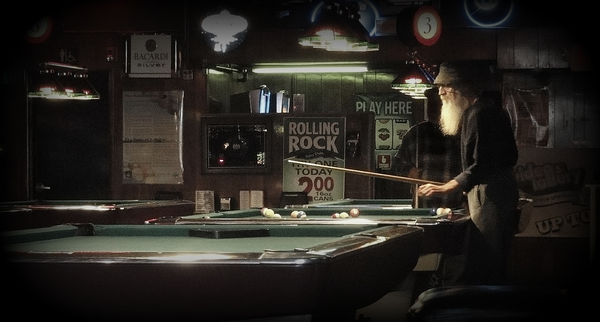
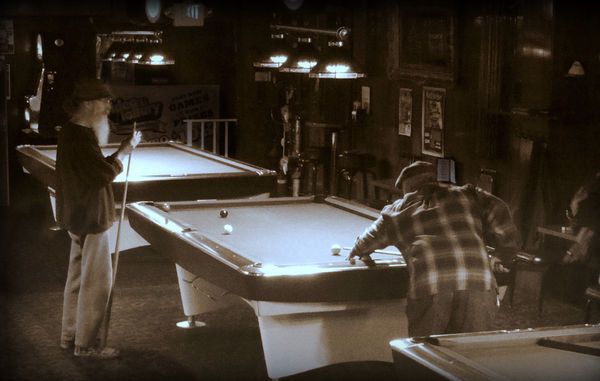
saw this couple, took the shot then offered to email it to them. They were thrilled. All because I had my p and s with me.
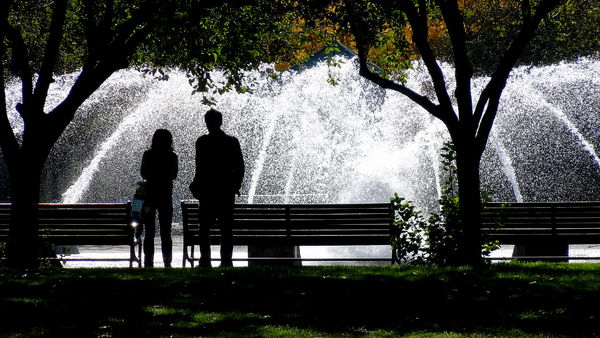
Oct 26, 2011 13:07:13 #
I took this with a Samsung S860 P&S... I have had many great comments on it.
Not real seaworthy
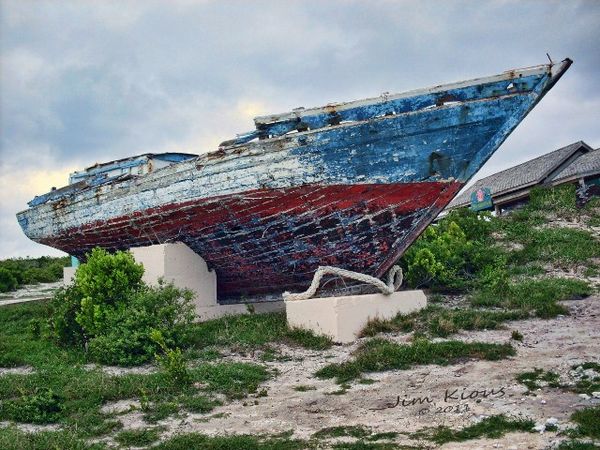
Oct 26, 2011 13:13:48 #
If you want to reply, then register here. Registration is free and your account is created instantly, so you can post right away.





